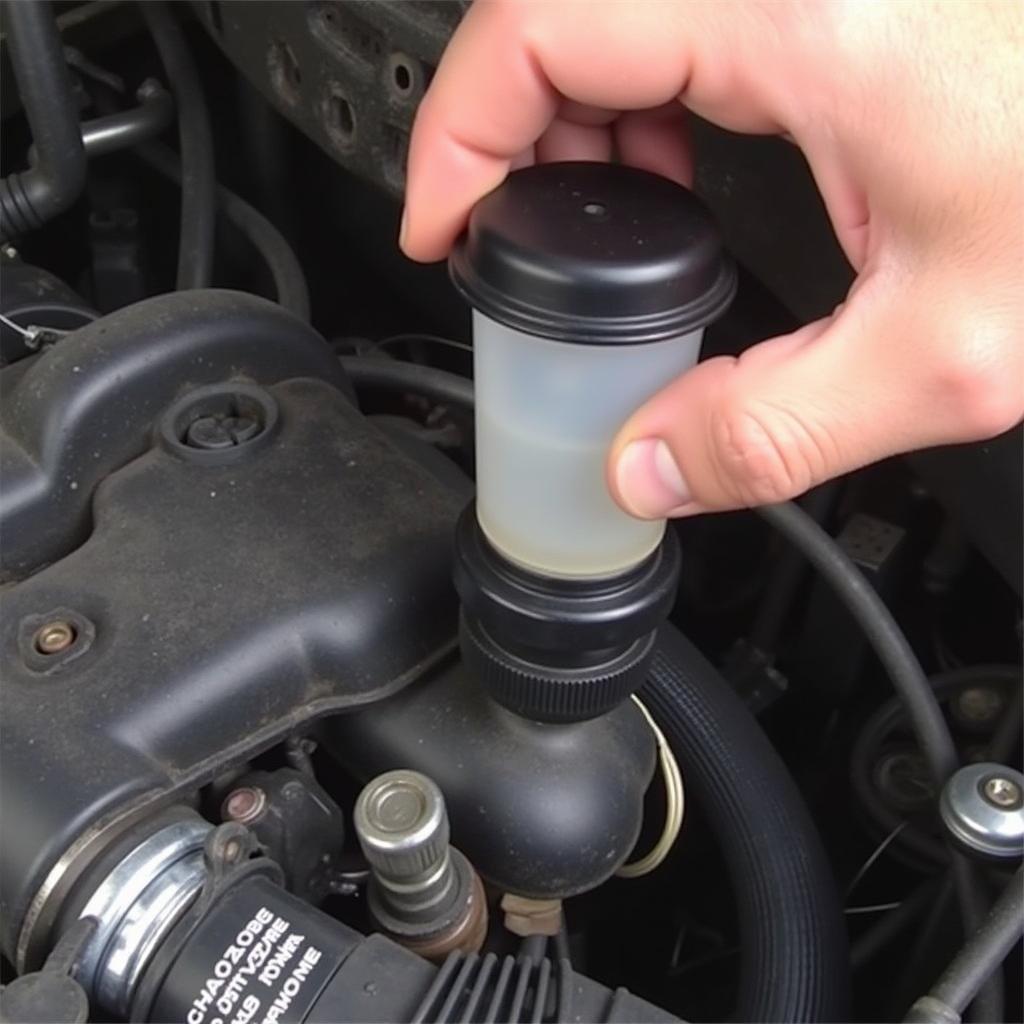The brake warning light in your 2009 Jeep Wrangler is a crucial indicator of potential issues with your vehicle’s braking system. When this light illuminates, it’s a sign that something is wrong and needs your immediate attention.
This article will delve into the common causes of the brake warning light in a 2009 Jeep Wrangler, provide you with step-by-step troubleshooting tips, and guide you toward effective solutions.
Common Reasons for a Brake Warning Light in a 2009 Jeep Wrangler
Several factors can trigger the brake warning light in your 2009 Jeep Wrangler. The most frequent culprits include:
1. Low Brake Fluid Level
One of the most straightforward reasons for a brake warning light is a low brake fluid level. Brake fluid is essential for transmitting pressure to the brake pads and calipers, and a low level can compromise braking efficiency.
2. Worn Brake Pads or Rotors
As your brake pads wear down, the sensor embedded in them will eventually trigger the brake warning light. Similarly, severely worn or warped brake rotors can also cause this warning.
3. Faulty Brake Light Switch
The brake light switch is a small component that sends a signal to the brake lights when you press the brake pedal. A malfunctioning brake light switch can prevent the lights from working properly and may also cause the brake warning light to turn on.
4. ABS System Malfunction
The Anti-lock Braking System (ABS) plays a crucial role in maintaining braking control by preventing the wheels from locking up. A fault within the ABS system, including a malfunctioning sensor, module, or wiring, can also cause the brake warning light to illuminate.
5. Faulty Parking Brake System
If the parking brake system is not functioning correctly, the brake warning light may come on. This could indicate a problem with the parking brake cable, the brake caliper, or the actuator.
Troubleshooting Your Brake Warning Light
Before you dive into any repairs, it’s crucial to properly diagnose the issue causing your brake warning light. Here’s a step-by-step guide:
1. Check the Brake Fluid Level
Start by checking the brake fluid level in the master cylinder reservoir. Locate the reservoir, usually near the firewall, and inspect the fluid level. Ensure it’s within the minimum and maximum markings on the reservoir.
2. Inspect Brake Pads and Rotors
Visually inspect the brake pads and rotors for wear and tear. Check for signs of wear or damage to the pads, including thinness, grooves, or cracks. Inspect the rotors for excessive wear, grooves, warping, or rust.
3. Test the Brake Light Switch
You can test the brake light switch by checking the brake lights with the pedal depressed. If the lights don’t illuminate, there’s a problem with the switch.
4. Scan for Error Codes
Use a diagnostic tool to scan for any error codes related to the brake system. This can pinpoint specific issues with the ABS system, brake light switch, or other components.
“If you’re not comfortable with any of these steps, it’s best to take your Jeep Wrangler to a qualified mechanic for diagnosis and repair,” advises Mark Johnson, a certified automotive technician with over 20 years of experience.
Resolving the Brake Warning Light
Once you’ve identified the cause of the brake warning light, you can take steps to resolve the issue:
1. Topping Off Brake Fluid
If the brake fluid level is low, you can simply top it off with the correct type of brake fluid. Consult your owner’s manual for the recommended fluid type.
2. Replacing Brake Pads or Rotors
If your brake pads or rotors are worn, they’ll need to be replaced. This is a common maintenance task, and you can find detailed guides and tutorials online.
3. Replacing the Brake Light Switch
Replacing a faulty brake light switch is usually a straightforward process. You can find replacement switches online or at your local auto parts store.
4. Addressing ABS System Issues
If you’ve identified an issue with the ABS system, it’s best to take your Jeep Wrangler to a professional mechanic.
Conclusion
A brake warning light in your 2009 Jeep Wrangler is a serious matter and should not be ignored. By understanding the common causes, troubleshooting steps, and solutions, you can address the problem promptly and ensure your vehicle’s safety. Remember, if you’re unsure about any of these steps, always seek professional assistance from a qualified mechanic.

